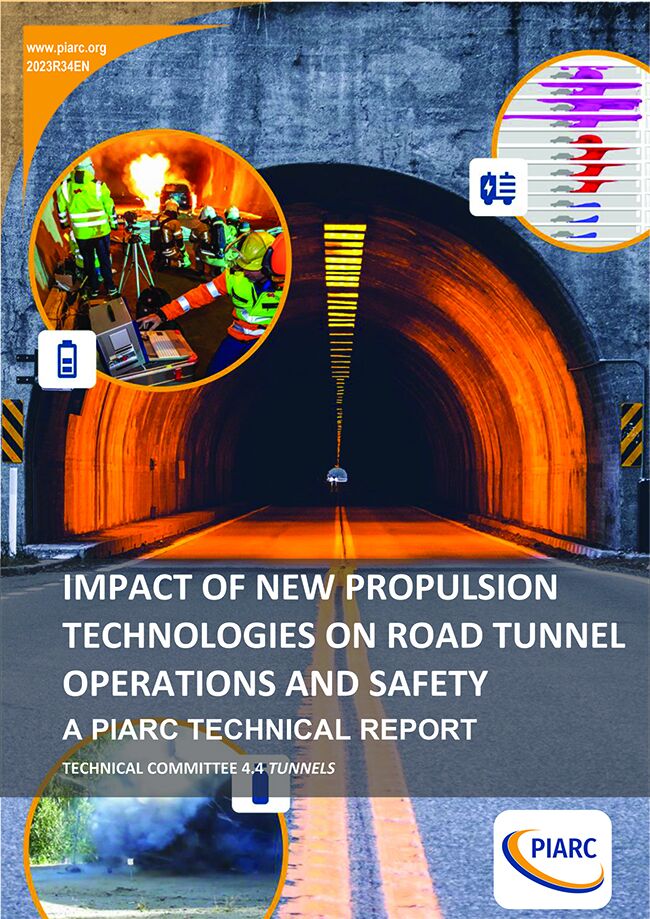Impact of New Propulsion Technologies on Road Tunnel Operations and Safety - A PIARC Technical Report

Alternative propulsion technologies, including battery-electric vehicles, are becoming more prevalent. Whilst such vehicles remain a small overall proportion of the vehicle fleet, the combination of impacts of Government policy and technological advances in alternative fuels is expected to accelerate their increase in numbers on the road and in tunnels in coming years. There may also be particular initiatives in certain geographical areas, such as on airport land for example, where higher proportions of alternatively fuelled vehicles are seen sooner than on the open road.
The introduction of new energy carriers (NEC) vehicles, such as battery electric vehicles and compressed natural gas buses in road tunnels has implications for post-incident recovery, risk analysis, and the definition of new incident types. Vehicle recovery, infrastructure recovery, and the impact on tunnel structure and equipment are some of the specific considerations that need to be taken into account for post-incident recovery.
Battery electric vehicles (BEVs) and gas vehicles, including compressed natural gas (CNG), liquefied natural gas (LNG), liquified petroleum gas (LPG), and fuel cell electric vehicles (FCEVs), are the focus of this study. This report provides a summary of the knowledge gained from various investigations into the fire characteristics, firefighting methods, and infrastructure impacts of BEVs and gas vehicles in road tunnels including potential changes in the nature of tunnel safety risks caused by the increasing use of alternative propulsion technologies in vehicles.
Recommendations for decision makers include obtaining local fleet penetration data of NEC vehicles, expanding incident data collection, and improving NEC vehicle identification. Technical aspects of vehicle design must be addressed, such as mitigating compressed gas hazards for gas vehicles and enhancing fire resistance for BEVs. Further research is needed in various areas such as the effects of BEV fires, evaluation of safety measures, and assessment of preventive measures for ventilation.
For PIARC, it is crucial to continuously work on NEC vehicle-related issues and update existing reports to consider the special aspects of NEC vehicles. This includes incorporating the latest research findings and industry developments to provide accurate and up-to-date guidance for decision makers and stakeholders in the realm of NEC vehicles and tunnel safety.
Information sheet
- Date: 2023
- Author(s): Comité technique / Technical Committee / Comité Técnico 2020-2023 4.4 Tunnels / Tunnels / Túneles
- Domain(s): Road Safety / Road Tunnel Operations
- Type: 2023R34EN - A PIARC Technical Report
- PIARC Ref.: 2023R34EN
- ISBN: 978-2-84060-822-6
- Number of pages: 74